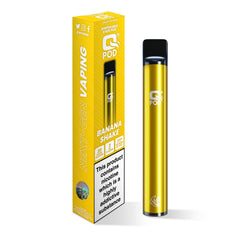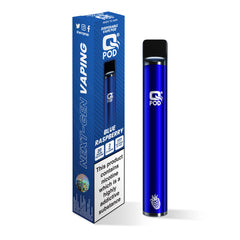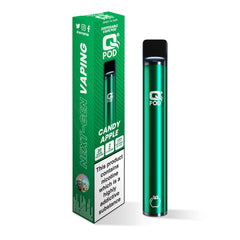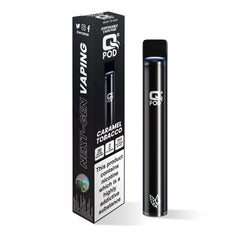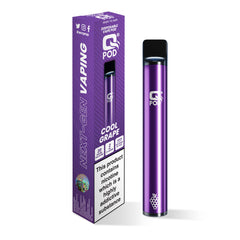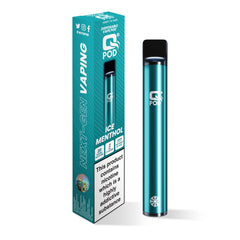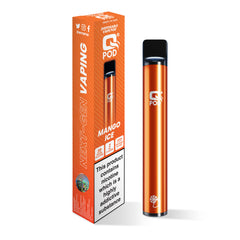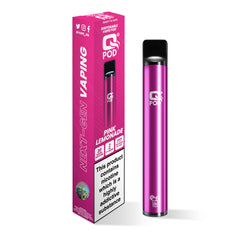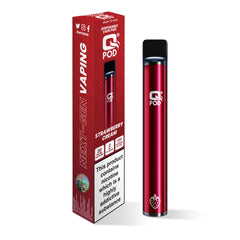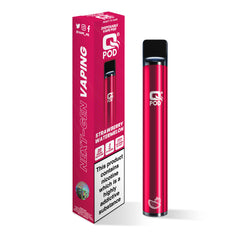Legal Vapes vs. Illegal Vapes: Risks and Implications and How to Spot an Illegal Vape
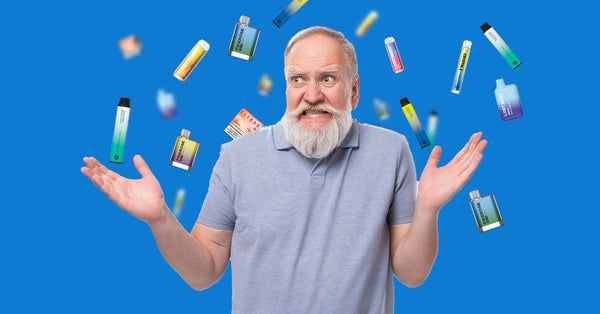
Introduction
The world of vaping has seen an explosion in popularity over recent years, with millions of individuals turning to e-cigarettes as an alternative to traditional tobacco products. However, amidst this boom, there has been a troubling proliferation of illegal vapes in the market. It is essential for consumers to be aware of the legal requirements for vape packaging and how to differentiate between legal and illegal vaping products. Unfortunately, there appears to be there is an obvious education gap and unawares in the general public regarding what constitutes as a legal vape and an illegal vape and the prevalence of the pandemic. This is fuelled by the brazen disregard of trading standards rules and regulations, with many trusted traders having a wide range of illegal vapes on display for customers to purchase. Therefore, it is important to us at VapeHQ to empower people with knowledge and delve into the specifics of legal vapes versus illegal vapes, shedding light on the risks associated with purchasing and using illicit vaping products.
Legal Vapes: Meeting Regulatory Requirements
Legal vapes, as defined by the Medicines and Healthcare products Regulatory Agency (MHRA) in Great Britain and Northern Ireland, adhere to a set of stringent regulations designed to ensure consumer safety and product quality. Before legal e-cigarettes and e-liquids can be sold, they must be notified to and published by the MHRA. This notification process ensures that products meet safety and quality standards. Their full regulations and standards can be found through this link: Medicines and Healthcare products Regulatory Agency.
Specifics
- Tank Capacity Restriction: Legal e-cigarette tanks are restricted to a capacity of no more than 2ml. This limitation is in place to prevent excessive nicotine consumption and maintain product safety.
- Maximum Nicotine Volume: Legal vaping products restrict the maximum volume of nicotine-containing e-liquid in one refill container to 10ml. This measure aims to control nicotine intake and promote responsible usage.
- Nicotine Strength Limit: E-liquids and disposable vapes that are legal are limited to a nicotine strength of no more than 20mg/ml. This regulation ensures that nicotine concentrations do not reach dangerous levels.
- Ingredient Bans: Certain ingredients are banned in legal vaping products, including colourings, caffeine, and taurine. These prohibitions are in place to minimise potential health risks.
- Disposable Vape Limits: Disposable vapes used legally are limited to 600 puffs, discouraging excessive consumption and promoting responsible vaping.
- Child-Resistant and Tamper-Evident Packaging: Nicotine-containing products or their packaging must be child-resistant and tamper-evident. These safety features are crucial to prevent accidental ingestion, particularly by children.
Labelling and Warnings and Packaging
Legal vapes must adhere to new labelling requirements and warnings:
Product Name: The product name on vape packaging should be clear and accurate, with no misleading or deceptive information. This requirement ensures that consumers can easily identify the product they are purchasing and understand its intended use. Misleading product names can lead to confusion and potential health risks.
Product Description: Vape packaging must provide a clear and accurate product description. This description should include comprehensive information about the product, such as its ingredients, contents, and intended use. Transparency in product descriptions allows consumers to make informed choices and understand what they are inhaling.
Nicotine Content: The nicotine content of the vaping product must be clearly labelled on the packaging. This information is crucial for consumers to gauge the strength of the nicotine they will be inhaling. Accurate nicotine labelling helps prevent excessive nicotine consumption, which can lead to health issues.
Age Restriction: All vape packaging must display an age restriction label. This label indicates that the product is not suitable for minors and should not be sold to individuals below the legal vaping age. Age restrictions are in place to protect young people from the potential risks associated with vaping.
Contact Details of the Manufacturer or Supplier: Vape packaging should include contact details for the manufacturer or supplier. This information allows consumers to reach out to the responsible party in case of questions, concerns, or issues related to the product. Transparency in contact details promotes accountability.
CE/UKCA Mark: The CE/UKCA mark is a mandatory requirement for all vape and vaping products. It indicates that the product meets the relevant safety standards and has undergone necessary testing and conformity assessments. The CE/UKCA mark is a symbol of compliance with European Union (EU)/UK regulations, ensuring that the product is safe for consumers.
Illegal Vapes: Risks and Dangers
Now that we've outlined the requirements for legal vapes, let's discuss the risks associated with illegal vapes, which fail to meet these regulations:
Health Risks:
a. Uncertain Ingredients: Illegal vapes often contain unknown or unregulated ingredients. This lack of oversight can lead to potentially harmful substances being inhaled by users, posing serious health risks.
b. Excessive Nicotine Concentrations: Some illicit vaping products may have nicotine concentrations well above the legal limit of 20mg/ml. This can result in nicotine poisoning, causing symptoms such as nausea, dizziness, and increased heart rate.
Dangers to Children:
a. Inadequate Child-Resistant Packaging: Illicit vaping products frequently lack child-resistant packaging, making them easily accessible to children. Accidental ingestion of nicotine can have severe consequences for young children.
b. Misleading Packaging: Illegal vapes may have packaging that appeals to children, with colourful designs or flavours that attract younger consumers, putting them at risk of exposure to harmful substances.
c. Selling to minors: Often, traders selling illegal vapes are more likely to sell to customers who are under the legal age of 18.
Broader Implications:
a. Lost Tax Revenue: The sale of illegal vapes often circumvents taxation, resulting in significant revenue losses for governments. These lost funds could have been used for public services and healthcare.
Black Market: Majority of illegal items will have to enter the country illegally and will therefore have the potential to be of financial benefit to gangs and other criminals, aiding and fuelling their other activities.
b. Unfair Competition: Legal vaping businesses that comply with regulations and pay taxes face unfair competition from illegal operators, which can impact their sustainability and growth.
Resources: The battle against the illegal vape industry has a burden on public resources. Finances, time, and effort that could be utilised elsewhere has to now be spent on reducing this problem.
Reporting Illegal Vapes
Consumers have a vital role in combating the spread of illegal vapes and protecting their own health. If you encounter a product that you suspect is an illegal vape, it's essential to report it to the appropriate authorities. This can be done by a number of different ways as per Trading Standards outlined in this link: https://www.tradingstandards.uk/media/3179067/how-to-report-guide.pdf
Conclusion
In the world of vaping, knowing the difference between legal and illegal vapes is crucial for safeguarding your health and protecting children from harm. Legal vapes adhere to strict regulations that prioritize consumer safety and product quality, while illegal vapes pose significant risks, from uncertain ingredients to excessive nicotine concentrations.
Knowledge is power, and by understanding the specific requirements for legal vaping products and staying informed about the potential risks of illegal vapes, consumers can make informed choices that prioritize their well-being. Additionally, reporting suspected illegal vapes to the authorities is a responsible step in contributing to the removal of dangerous products from the market, thereby helping to protect public health and safety.
Products Related To This Article..



 Innokin
Innokin Aspire
Aspire VooPoo
VooPoo Smok
Smok Geek Vape
Geek Vape Oxva
Oxva Uwell
Uwell IQOS
IQOS  PURE
PURE  QONE
QONE  QSALTS
QSALTS  QPOD
QPOD  VAMPIRE
VAMPIRE 